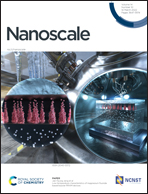Three-dimensional artificial chirality towards low-cost and ultra-sensitive enantioselective sensing
Abstract
Artificial chiral structures have potential applications in the field of enantioselective signal sensing. Advanced nanofabrication methods enable a large diversity in geometric structures and broad selectivity of materials, which can be exploited to manufacture artificial three-dimensional chiral structures. Various chiroptical phenomena exploiting spin and orbital angular momentum at the nanoscale have been continuously exploited as a way to effectively detect enantiomers. This review introduces precisely controlled bottom-up and large-area top-down metamaterial fabrication methods to solve the limitations of high manufacturing cost and low production speed. Particle synthesis, self-assembly, glanced angled vapor deposition, and three-dimensional plasmonic nanostructure printing are introduced. Furthermore, emerging sensitive chiral sensing methods such as cavity-enhanced chirality, photothermal circular dichroism, and helical dichroism of single particles are discussed. The continuous progress of nanofabrication technology presents the strong potential for developing artificial chiral structures for applications in biomedical, pharmaceutical, nanophotonic systems.

- This article is part of the themed collections: Recent Review Articles and Nanoscale 2022 Emerging Investigators


 Please wait while we load your content...
Please wait while we load your content...